Non-Living Biomachines
A breakthrough technology enabling molecular measure without any machine.
Non-Living Biomachines
A breakthrough technology enabling molecular measurement without any machine.
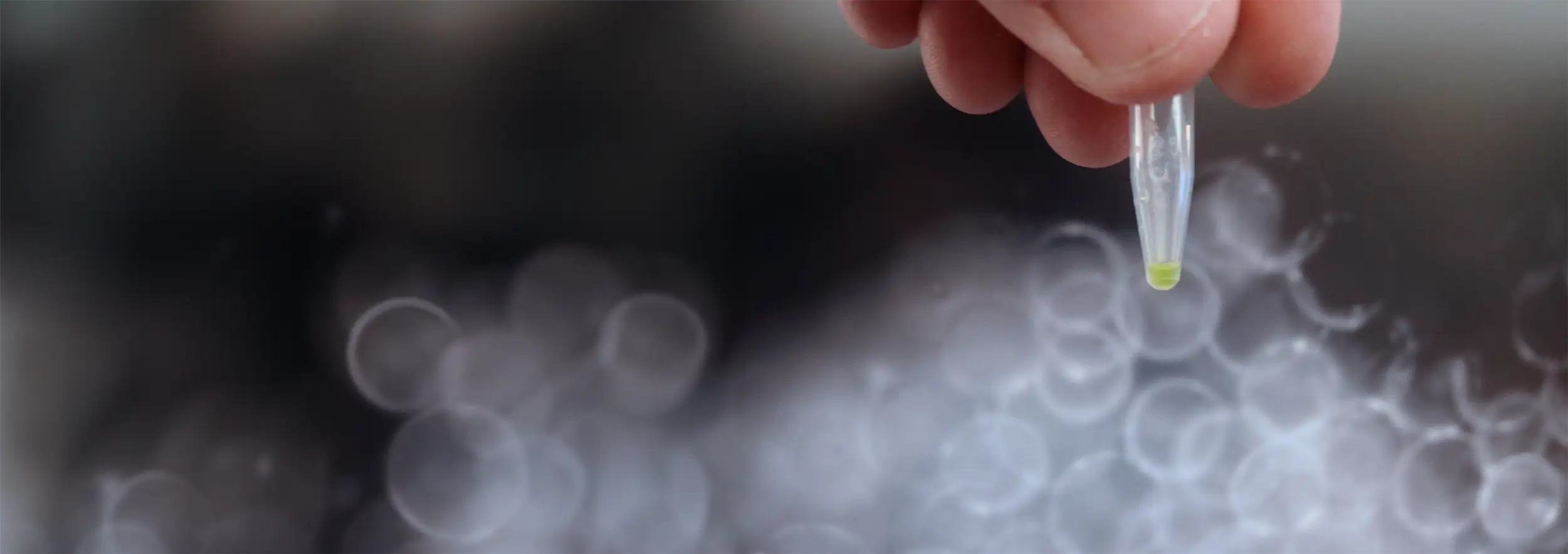
SkillCell has developed a breakthrough “lab-in-a-drop” technology (1) that enables to detect molecular biomarkers of interest, without the need for any machine. This new generation patented technology (2) provides critical and decisive information and can be put in anyone’s hands!
It consists in the development of miniaturized and easy-to-use tests designed to provide reliable and clear answers to their users. Our tests fit in the palm of a hand but are so sophisticated that they replace fully equipped labs in terms of possibilities and performance.
Moreover, SkillCell tests results are easy to interpret: color change or customized outcomes, with digital reading and link to data systems possibility.
Learn About Non-Living Biomachines
What is non-living biomachine?
A non-living biomachine look like a cell. It’s composed of a membrane (phospholip bilayer) encapsuling a biochemical network (enzymes). The typical size of one non-living biomachine is 30µm. Our non-living biomachines are produced using micro-fluidic technology.
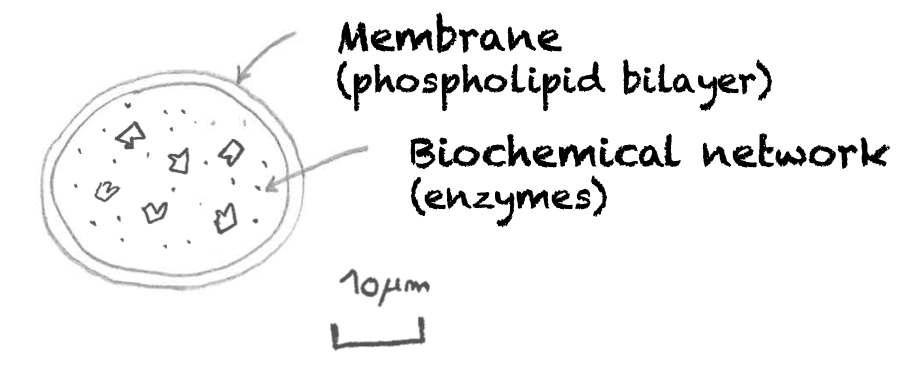
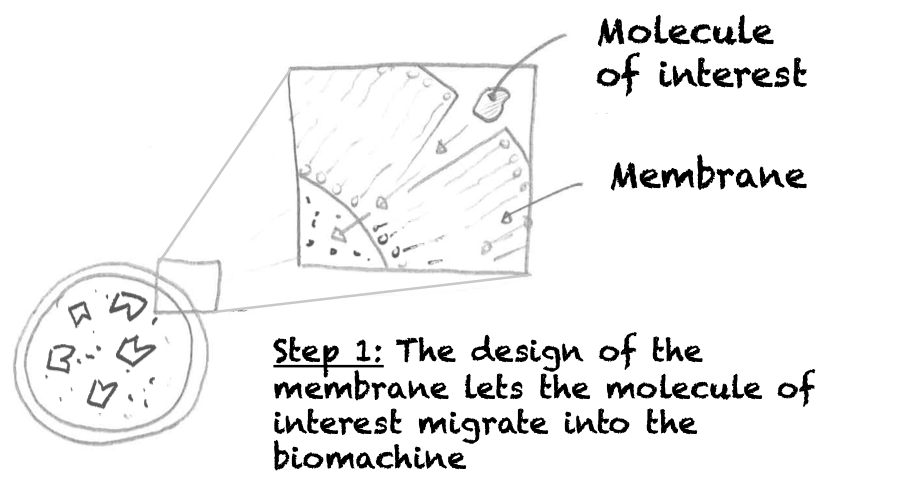
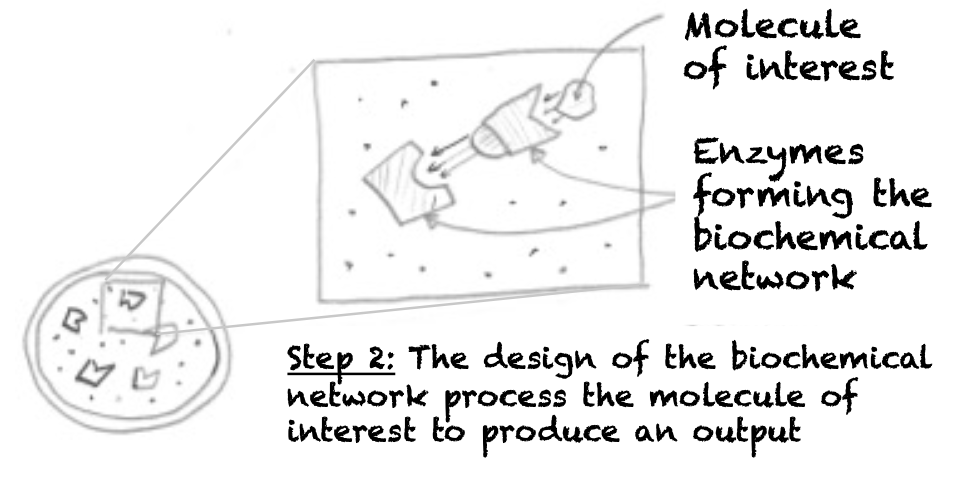
How non-living biomachine works?
The basic behavior of our non-living biomachine can be decomposed in 2 steps.
Step 1: Our membranes are specifically designed to let the target molecules go through and migrate into the biomachine. Other particles cannot penetrate the membrane and stay in the sample without perturbing the biomachine.
Step 2: After the penetration of the target molecules, it interacts with the biochemical network. This network is specially designed to process the target molecules and produce an output leading to the final response.
What are the advantages of our non-living biomachines?
Our non-living biomachines have several advantages, they have a specific input and specific output (customizable), the membrane is protecting the detection network from the external environment (leading to a better performance) and the programmable network allows on demand process form the target molecules.
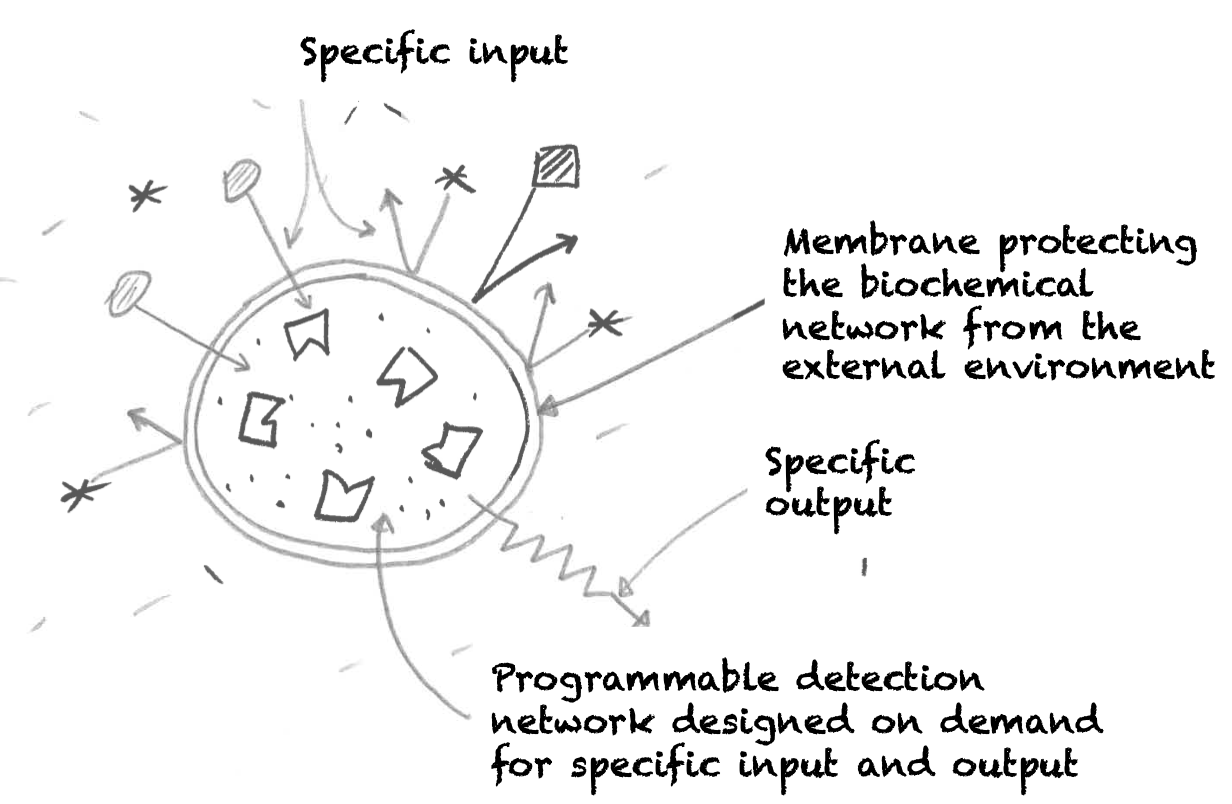
Programmable non-living biomachines
One of the unique specificities of our non-living biomachines is the fact that they are programmable, what does it mean and how it works?
What does mean programmable for a non-living biomachine ?
First let’s introduce a generic concept, the medical diagnostic algorithm. Medical diagnostic algorithms are systematic sets of instructions and data used by healthcare professionals to aid in diagnosing medical conditions(3). They incorporate clinical guidelines to analyze patient data, aiming to standardize the diagnostic process, improve accuracy, and reduce errors. One illustration of this type of algorithm is listed below.
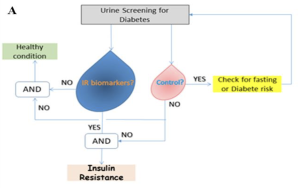
An example of medical diagnostic algorithm, for the non-living biomachines
Our non-living biomachine can be programmed to perform this exact algorithm. This is why we call it a programmable non-living biomachine. Because it’s capable of processing inputs (biomarkers) through a logical algorithm, to produce specific outputs.
How it works?
Although biomachine design appears relatively simple, its development process demands substantial effort. This involves tasks like extracting circuits from a real-world reaction database. When dealing with multi-function designs, typical approaches involve constructing and deploying each function independently to mitigate potential interference among different reactions. At SkillCell, we introduce a mechanism for designing circuit, using a robust algorithm for extracting such circuits(4). Our approach facilitates integrated multi-function design and enables seamless switching between different functionalities.
Our Computational Design Tool enables us to identify biological networks pertinent to a targeted medical diagnostic algorithm. Powered by a tailored artificial intelligence algorithm, our tool can generate multiple solutions for a given problem. The ultimate design selection factors in the industrial availability of raw materials and the cost-effectiveness of the end product.
The performance of a lab in a drop
SkillCell’s patented invention is based on Synthetic Biology, Artificial Intelligence and Microfluidics. It consists of non-living biomachines that make it possible to detect and measure molecular biomarkers of interest that cannot be detected with antibodies screening technologies. These biomarkers can be:
- Pathological, related to a disease (e.g.: Metabolic disorders: Type 2 diabetes, Obesity, NASH…)
- Food and drink related (for example Glyphosate)
- Environmental, related to aggressive environments (e.g.: threats from mosquito species)
- Others, related to specific biotechnological issues (e.g.: industrial bioprocesses)
In other words, SkillCell can solve countless useful biochemical decision algorithms. Furthermore, the micrometric bioreactors can be inserted into various convenient matrices (gel beads, liquids, etc.) to meet end user needs.
Easy and fast
SkillCell tests are easy and fast to interpret: results are available in just a few minutes in the form of a color change. Fully standalone, our non-living biomachine technology requires no equipments and no power sources to function. For even greater convenience, it can:
- Take the form of gel beads, solid or semi-solid gels, strips, patches, sprays, etc.
- Provide a customized outcome for specific needs: for instance, results displayed on digital devices.
Connectivity
SkillCell tests results are easy to interpret (colorimetric results or customized outcomes), with the possibility of a digital application readout to enable interconnections with information systems and tools.
Cost-efficient
Thanks to an efficient and automated production system, SkillCell provides cost-efficient test solutions. As a result, they can be used for a wide range of users such as private individuals, healthcare workers, industrials, public authorities, and service providers.
Environmentally friendly
SkillCell tests have a high safety level. No training or precautions for use are needed. They are non-polluting, non-toxic, and biodegradable.
References
-
(1) MOLINA Franck, “Biomachines for Medical Diagnosis”, in Advanced Materials Letters, Vol. 11, No. 4, 2020, pp. 1-5. https://doi.org/10.5185/amlett.2020.041499
-
(2) Method for the preparation of biosynthetic device and their uses in diagnostics, Patent n°WO2017178896A3
-
(3) Courbet, A., Amar, P., Fages, F., Renard, E., & Molina, F. (2018). Computer-aided biochemical programming of synthetic microreactors as diagnostic devices. Molecular systems biology, 14(4), e7845. https://doi.org/10.15252/msb.20177845
-
(4) Santos Schneider, F., Amar, P., Bahri, A., Espeut, J., Baptiste, J., Alali, M., Fages, F., & Molina, F. (2020). Biomachines for Medical Diagnosis. Advanced Materials Letters, 11(4), 1-5. doi: 10.5185/amlett.2020.041499